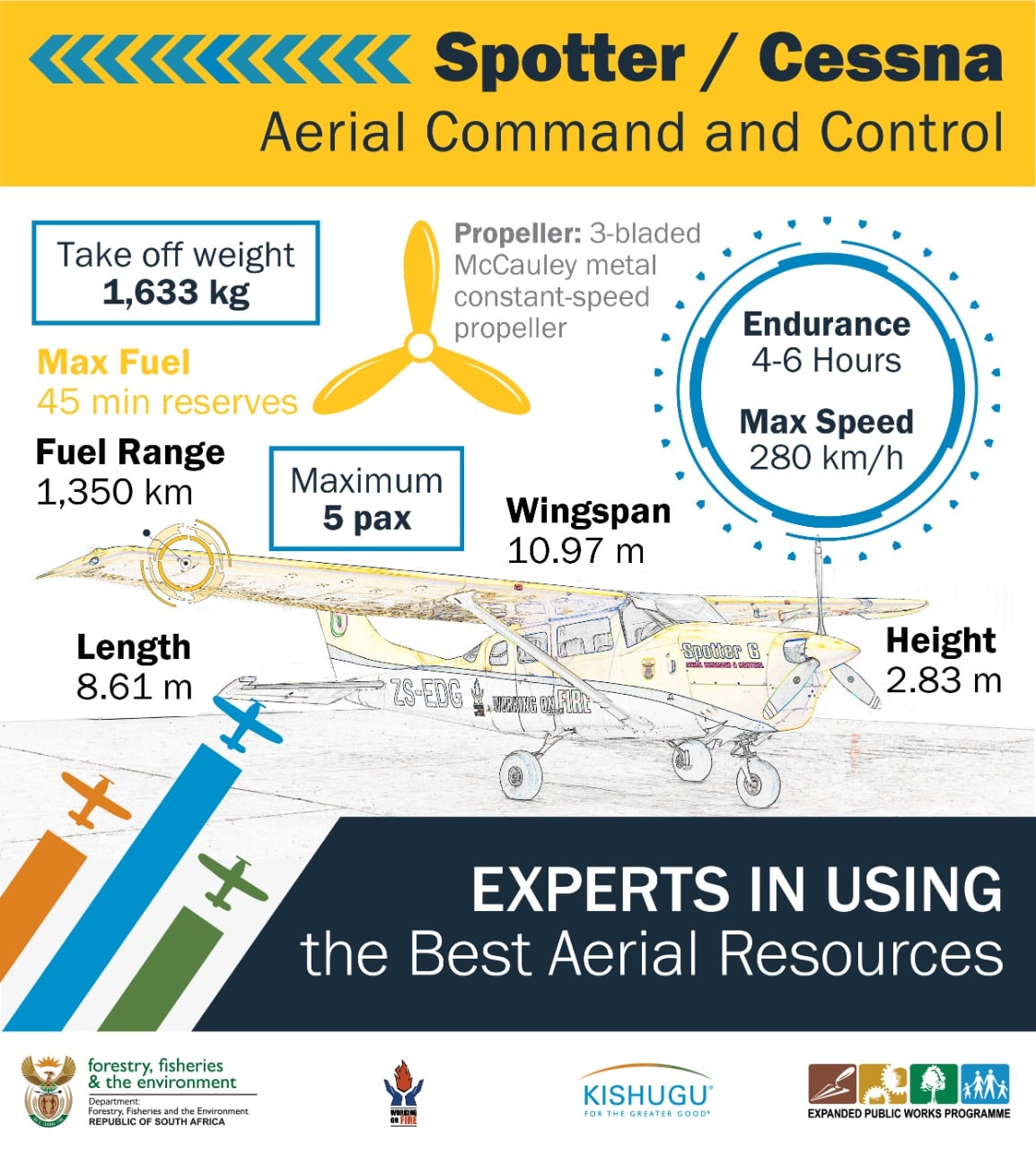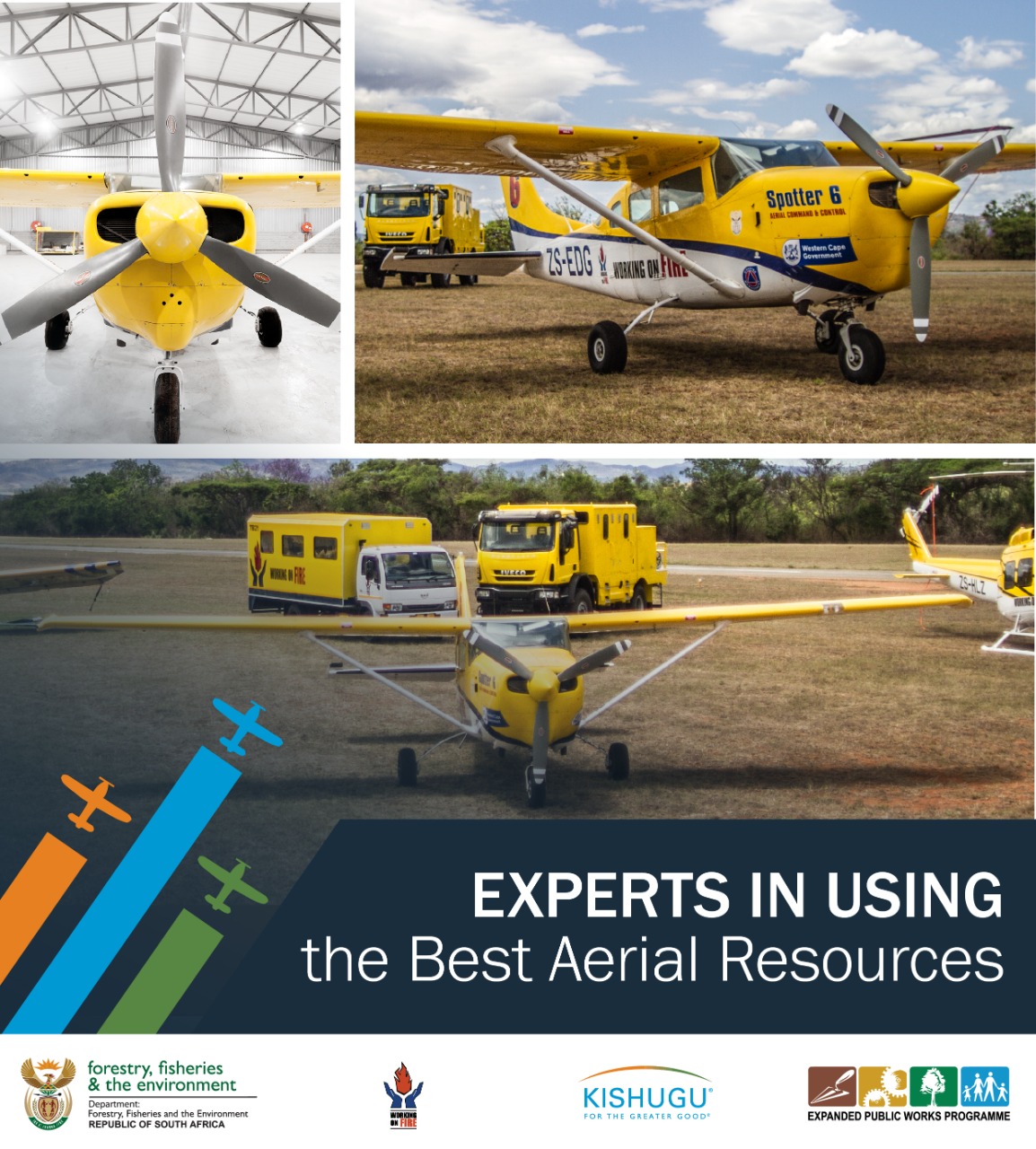Kishugu Aviation has 30 years of experience in aerial firefighting and is growing from strength to strength to save lives, property, and the environment from wildfires.
We are ready for the Winter Fire Season in the northern parts of the country and will soon demobilise to our air bases to be fire ready.
These were the proud words of Kishugu Aviation’s CEO, Emile Grobbelaar, after he thanked all their partners who worked tirelessly in the country’s Southern parts during the Summer Fire Season, which recently came to an end.
He states they can provide any landowner who needs specialised aerial services with firefighting aircraft to assist in keeping their property safe from unwanted wildfires. Kishugu Aviation uses the best firefighting aircraft in the world and has the most specialised teams to combat fires.
Kishugu, the implementing agent for the award-winning Department of Forestry Fisheries and the Environment’s Working on Fire programme for the past 18 years, makes use of Working on Fire ground teams (firefighters) and aerial teams, who assist the ground teams to effectively fight fires. Our aerial resources cool down the fireline for the Working on Fire fighters to move faster on the fireline when putting the fires out.
Grobbelaar explains that “every aerial firefighting tool plays a significant part in the success of assisting the Working on Fire’s ground crews in fighting fires effectively.”
To focus on Command and Control, he says that a part of Kishugu’s arsenal of aerial resources is the Cessna Spotter Aircraft. “Kishugu mainly uses the Cessna 182, 206 or 210 for aerial Command and Control during firefighting and for safety and operational command over wildfires. Kishugu’s Hueys and AT802 Bomber aircraft are used for initial and extended attack.”
The Cessna Spotters are like eagles, flying over the firefighting aircraft to get a holistic view of the fire. “Since a spotter pilot has a bird’s eye view, they see the whole picture. They see the fire, the burnt areas, dams and rivers, roads to access or escape the fire from, the ground teams’ positions, other firefighting aircraft, and where water drops are being made.”
Emile says the importance of the Spotter during aerial firefighting is often overlooked, but its function is essential for the safety and efficiency of wildland firefighting operations. They work closely with the Bombers, Hueys and Black Hawk to effectively fight fires and direct them where to make water drops. They also stay in constant contact with the dispatch centre and ground teams to give an overview of the fire.
“The Spotter has an endurance of 4 hours. Our experienced crews observe, analyse, and predict the Spotter’s fire behaviour.”
The Spotter pilot, and all our other firefighting pilots, are considered the best pilots globally, considering the dangerous circumstances they fly in, including mountainous areas, high wind speeds and low visibility during firefighting operations. We focus on safety, quality, client service, and innovation through all of this, Grobbelaar concluded.



